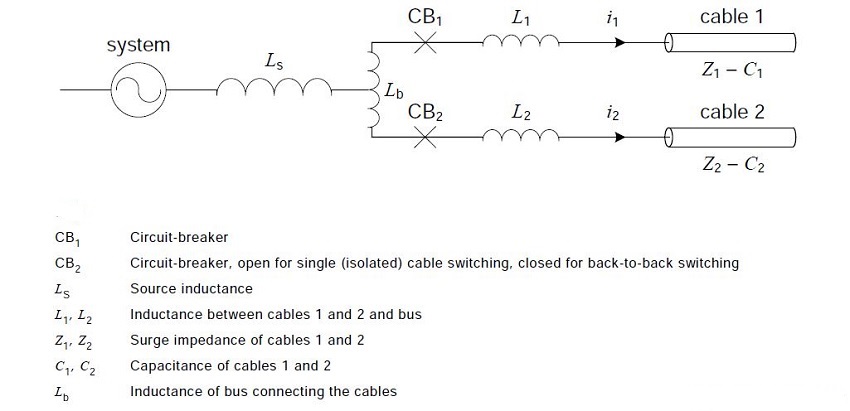
The energisation of a cable by the closing of a CB will result in a transient inrush current. The magnitude and rate of change of this inrush current is a function of the following:
- applied voltage.
- cable surge impedance.
- cable capacitive reactance.
- inductance in the circuit.
- any charges on the cable at the instant of closing.
- any damping of the circuit.
When cables are switched back to back transient currents of high magnitude and initial high rate of change may flow between cables when the switching CB is closed or restrikes on opening. This surge current is limited by the cable surge impedances and any inductance connected between the energized cable(s) and the switched cable. This transient current usually decays to zero in a fraction of a cycle of the system frequency. During b-to-b cable switching, the component of current supplied by the source is at a lower rate of change and so small that it may be neglected. Due to the very high damping of the inrush current, the switching of parallel cables usually does not represent a problem for modern CBs.
A typical circuit for b-to-b cable switching is shown in Figure.



